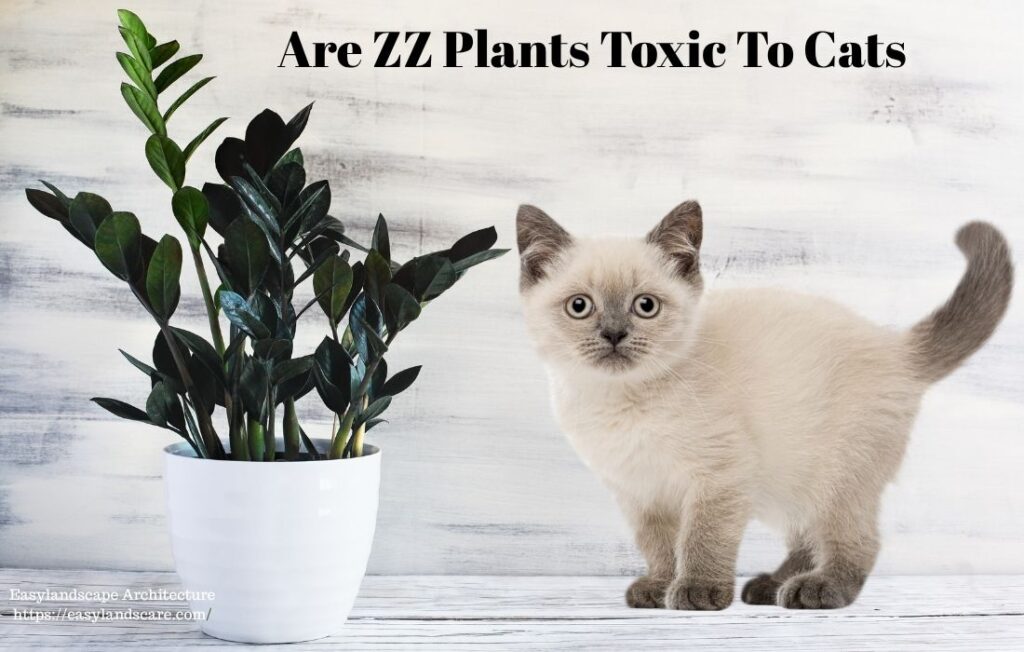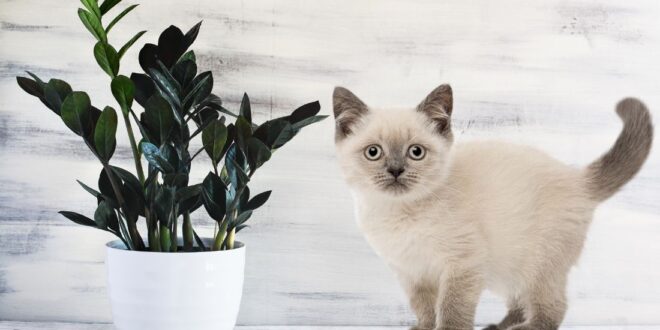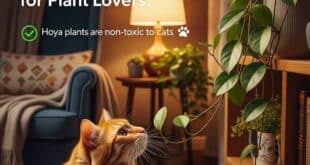ZZ Plants and The Cats
Hello plant lovers! ZZ plants (Zamioculcas zamiifolia) anyone? The rugged looks of them and their lush leaves make them popular amongst many of us. But wait a minute! This is an essential piece if you live with any four-legged family members and have the most popular plant in our home. You see, is that attention-getting green just being neato or your cat’s but a chalice for a lurking danger? Let’s take a closer look at whether are zz plants toxic to cats.
Why Are ZZ Plants So Popular?
Since ZZ plants are a hardy species, they are perhaps the best choice for workers and plant lovers with a busy and fast-paced lifestyle. Their ability to thrive even in low light, their resistance to drought, and their vibrant, glossy green leaves make them both low-maintenance and decorative. So, it’s no surprise that we often encounter them in our homes and offices. But there’s a truth overshadowed by this popularity…
The Core Issue: ZZ Plants and Our Feline Friends
Yes. According to research: ZZ plants are indeed toxic to cats. Many reliable sources, such as the American Society for the Prevention of Cruelty to Animals (ASPCA), classify the ZZ plant on their list of toxic plants for cats. So, how does this beauty pose a risk to our little companions? Answering “are zz plants toxic to cats?” requires understanding what makes them harmful.
The Source of Toxicity: Calcium Oxalate Crystals
The leaves and stems of the ZZ plant contain microscopic, needle-like crystals called calcium oxalate crystals. When your cat bites or chews any part of the plant, these crystals embed themselves in the mucous membranes of the mouth and throat, causing irritation and pain. Don’t you think it’s quite disturbing to even think about such a situation? Unfortunately, these crystals cannot dissolve in the mouth and cause immediate discomfort in the living tissues they come into contact with.
Symptoms of Poisoning to Look For in Cats
If you suspect your cat has come into contact with or ingested a ZZ plant, keep an eye out for the following symptoms:
- Obvious burning, pain, and irritation in the mouth and lips (Your cat may constantly try to paw at its mouth)
- Excessive drooling
- Vomiting
- Loss of appetite
- Difficulty swallowing
- Rarely, swelling and difficulty breathing (especially if a significant amount is ingested)
These symptoms usually appear shortly after contact with the plant.
What to Do in Case of Poisoning
- Stay Calm: Instead of panicking, try to get the situation under control.
- Remove the Plant: Prevent your cat from accessing the plant further.
- Clean Their Mouth (Carefully): If possible, gently remove any remaining plant pieces from your cat’s mouth. However, you should not push too hard as this can cause further irritation. Offering water or milk to rinse their mouth (if they can swallow) is sometimes recommended, but it’s best to consult your veterinarian.
- Call Your Veterinarian Immediately: This is the most crucial step! Explain the situation exactly as it is and follow your veterinarian’s instructions. Treatment may be necessary depending on the severity of the poisoning and your cat’s overall health. Taking a photo or a small piece of the plant with you can help with diagnosis.
Definitely do not try to induce vomiting yourself!
ZZ Plants and Cats: Tips for a Safe Environment

I can almost hear you saying, “But I love my ZZ plant and I have a cat, what should I do?” Here are a few practical suggestions:
- Out-of-Reach Places: Place your plant on high shelves, in hanging pots, or in a closed room where your cat absolutely cannot reach it.
- Deterrents: You might consider using scents that cats dislike around the plant (like citrus peels, but make sure these are also safe for your cat) or commercially available cat repellent sprays. However, their effectiveness varies depending on your cat’s age and breed.
- Cat-Safe Alternatives: Perhaps the safest route is to only bring cat-friendly plants into your home. There are many wonderful and safe options available, such as the Money Tree (Pachira aquatica), Boston Fern (Nephrolepis exaltata), Prayer Plant (Maranta leuconeura), or Bamboo Palm (Chamaedorea seifrizii). You can create a fantastic green corner with them too!
Conclusion
While plants add color and joy to our lives, we must not overlook the safety of our beloved furry friends. Although the ZZ plant is a wonderful plant, it requires a bit more caution in a home with cats. By making conscious choices, you can protect both your passion for green and the health of your paw-tner. Remember, their curiosity is endless, and our responsibility is to keep them safe! We’ve always talked about the harms of the ZZ Plant. So, would you like to take a look at its benefits? If so, I recommend you read my article titled “ZZ Plant Benefits from My Home and Office: A Personal Journey“.
You can find detailed information about zz plant here. => Your Ultimate ZZ Plant Guide: Care, Propagation, and Varieties
You can find the care guide for zz plant here. => Easy ZZ Plant Care for a Healthy Houseplant




